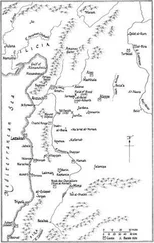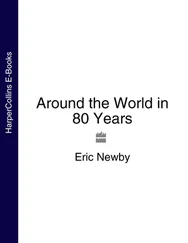8. G. Bush and B. Scowcroft, A World Transformed (New York, 1998), p. 489.
9. Cited by J. Connelly, “In Northwest: Bush–Cheney Flip Flops Cost America in Blood,” Seattle Post-Intelligencer , 29 July 2004. Also see B. Montgomery, Richard B. Cheney and the Rise of the Imperial Vice Presidency (Westport, CT, 2009), p. 95.
10. W. Martel, Victory in War: Foundations of Modern Strategy (Cambridge, 2011), p. 248.
11. President Bush, “Address before a Joint Session of the Congress on the State of the Union,” 28 January 1992, PPPUS: George Bush, 1992–1993 , p. 157.
12. For the collapse of the Soviet Union, see S. Plokhy, The Last Empire: The Final Days of the Soviet Union (New York, 2014); for China in this period, L. Brandt and T. Rawski (eds), China’s Great Economic Transformation (Cambridge, 2008).
13. Bush, “State of the Union,” 28 January 1992, p. 157.
14. UN Resolution 687 (1991), Clause 20.
15. S. Zahdi and M. Smith Fawzi, “Health of Baghdad’s Children,” Lancet 346.8988 (1995), 1485; C. Ronsmans et al., “Sanctions against Iraq,” Lancet 347.8995 (1996), 198–200. The mortality figures were later revised downwards, S. Zaidi, “Child Mortality in Iraq,” Lancet 350.9084 (1997), 1105.
16. 60 Minutes , CBS, 12 May 1996.
17. B. Lambeth, The Unseen War: Allied Air Power and the Takedown of Saddam Hussein (Annapolis, 2013), p. 61.
18. For an overview here, see C. Gray, “From Unity to Polarization: International Law and the Use of Force against Iraq,” European Journal of International Law 13.1 (2002), 1–19. Also A. Bernard, “Lessons from Iraq and Bosnia on the Theory and Practice of No-Fly Zones,” Journal of Strategic Studies 27 (2004), 454–78.
19. Iraq Liberation Act, 31 October 1998.
20. President Clinton, “Statement on Signing the Iraq Liberation Act of 1998,” 31 October 1998 , PPPUS: William J. Clinton, 1998 , pp. 1938–9.
21. S. Aubrey, The New Dimension of International Terrorism (Zurich, 2004), pp. 53–6; M. Ensalaco, Middle Eastern Terrorism: From Black September to September 11 (Philadelphia, 2008), pp. 183–6; for the Dharan attack, however, note C. Shelton, “The Roots of Analytic Failure in the US Intelligence Community,” International Journal of Intelligence and CounterIntelligence 24.4 (2011), 650–1.
22. Response to the Clinton letter, undated, 1999. Clinton Presidential Records, Near Eastern Affairs, Box 2962; Folder: Iran–U.S., National Security Archive. For Clinton’s dispatch, delivered by the Foreign Minister of Oman, see “Message to President Khatami from President Clinton,” undated, 1999, National Security Archive.
23. “Afghanistan: Taliban seeks low-level profile relations with [United States government]—at least for now,” U.S. Embassy Islamabad, 8 October 1996, National Security Archive.
24. “Afghanistan: Jalaluddin Haqqani’s emergence as a key Taliban Commander,” U.S. Embassy Islamabad, 7 January 1997, National Security Archive.
25. “Usama bin Ladin: Islamic Extremist Financier,” CIA biography 1996, National Security Archive.
26. “Afghanistan: Taliban agrees to visits of militant training camps, admit Bin Ladin is their guest,” U.S. Consulate (Peshawar) cable, 9 January 1996, National Security Archive.
27. Ibid.
28. National Commission on Terrorist Attacks upon the United States (Washington, DC, 2004), pp. 113–14.
29. President Clinton, “Address to the Nation,” 20 August 1998, PPPUS: Clinton, 1998 , p. 1461. Three days earlier, the President had given his now famous testimony that the previous statement he had given, “I did not have sexual relations with that woman, Miss [Monica] Lewinsky,” was truthful and that his claim that “there is not a sexual relationship, an improper sexual relationship or any other kind of improper relationship” was correct, depending “on what the meaning of the word ‘is’ is,” Appendices to the Referral to the US House of Representatives (Washington, DC, 1998), 1, p. 510.
30. “Afghanistan: Reaction to US Strikes Follows Predictable Lines: Taliban Angry, their Opponents Support US,” U.S. Embassy (Islamabad) cable, 21 August 1998, National Security Archive.
31. “Bin Ladin’s Jihad: Political Context,” U.S. Department of State, Bureau of Intelligence and Research, Intelligence Assessment, 28 August 1998, National Security Archive.
32. “Afghanistan: Taliban’s Mullah Omar’s 8/22 Contact with State Department,” U.S. Department of State cable, 23 August 1998, National Security Archive.
33. “Osama bin Laden: Taliban Spokesman Seeks New Proposal for Resolving bin Laden Problem,” U.S. Department of State cable, 28 November 1998, National Security Archive.
34. Ibid.
35. “Afghanistan: Taliban’s Mullah Omar’s 8/22 Contact with State Department,” U.S. Department of State cable, 23 August 1998, National Security Archive.
36. Ibid.
37. For example, “Afghanistan: Tensions Reportedly Mount within Taliban as Ties with Saudi Arabia Deteriorate over Bin Ladin,” U.S. Embassy (Islamabad) cable, 28 October 1998; “Usama bin Ladin: Coordinating our Efforts and Sharpening our Message on Bin Ladin,” U.S. Embassy (Islamabad) cable, 19 October 1998; “Usama bin Ladin: Saudi Government Reportedly Turning the Screws on the Taliban on Visas,” U.S. Embassy (Islamabad) cable, 22 December 1998, National Security Archive.
38. Osama bin Laden: A Case Study , Sandia Research Laboratories, 1999, National Security Archive.
39. “Afghanistan: Taleban External Ambitions,” U.S. Department of State, Bureau of Intelligence and Research, 28 October 1998, National Security Archive.
40. A. Rashid, Taliban: The Power of Militant Islam in Afghanistan and Beyond (rev. edn, London, 2008).
41. Osama bin Laden: A Case Study , p. 13.
42. “Bin Ladin Determined to Strike in US,” 6 August 2001, National Security Archive.
43. “Searching for the Taliban’s Hidden Message,” U.S. Embassy (Islamabad) cable, 19 September 2000, National Security Archive.
44. The 9/11 Commission Report: Final Report of the National Commission on Terrorist Attacks upon the United States (New York, 2004), p. 19.
45. Ibid., passim.
46. President George W. Bush, Address to the Nation on the Terrorist Attacks, 11 September 2001, PPPUS: George W. Bush, 2001 , pp. 1099–100.
47. “Arafat Horrified by Attacks, But Thousands of Palestinians Celebrate; Rest of World Outraged,” Fox News, 12 September 2001.
48. Statement of Abdul Salam Zaeef, Taliban ambassador to Pakistan, 12 September 2001, National Security Archive.
49. Al-Jazeera, 12 September 2001.
50. “Action Plan as of 9/13/2001, 7:55am,” U.S. Department of State, 13 September 2001, National Security Archive.
51. “Deputy Secretary Armitage’s Meeting with Pakistani Intel Chief Mahmud: You’re Either with Us or You’re Not,” U.S. Department of State, 13 September 2001, National Security Archive.
52. “Message to Taliban,” U.S. Department of State cable, 7 October 2001, National Security Archive.
53. “Memorandum for President Bush: Strategic Thoughts,” Office of the Secretary of Defense, 30 September 2001, National Security Archive.
54. President Bush, State of the Union address, 29 January 2002, PPPUS: Bush, 2002 , p. 131.
55. “US Strategy in Afghanistan: Draft for Discussion,” National Security Council Memorandum, 16 October 2001, National Security Archive.
56. “Information Memorandum. Origins of the Iraq Regime Change Policy,” U.S. Department of State, 23 January 2001, National Security Archive.
Читать дальше











